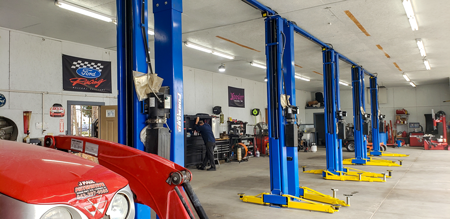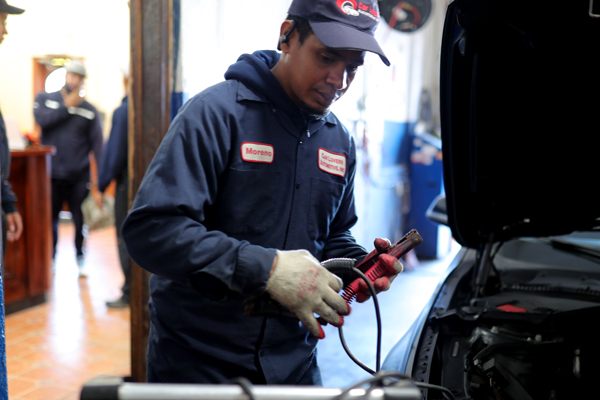All Categories
Featured

[/image]

Preserving your lorry's tires is important to make sure a smooth, safe, and effective driving experience. Two crucial services that are often overlooked but have a significant influence on tire durability and performance are tire turning and alignment. These services aid maintain your automobile running effectively and protect against uneven tire wear that can influence both security and fuel economy. Let's study what tire rotation and placement are and why they're vital for your vehicle.
What Is Tire Rotation? Tire rotation is the process of relocating your tires from one position to an additional to ensure they put on evenly. Since your automobile's tires work at different rates relying on their placement (front tires versus back tires), revolving them frequently aids to distribute the wear uniformly, leading to a much longer lifespan for your tires.
Tires on the front axle have a tendency to wear faster than those on the rear axle, particularly in front-wheel-drive cars, where the front tires deal with both guiding and power. On the various other hand, back tires may use unevenly depending upon the lorry's weight distribution and driving problems. By turning your tires every 6,000 to 8,000 miles (or as advised by the maker), you'll make sure an extra balanced wear pattern.
What Is Tire Positioning? Tire alignment, also referred to as wheel placement, describes changing the angles of your cars and truck's wheels to the maker's specs. Proper positioning makes sure that your tires are aiming in the best direction, and it helps maximize tire life and boost vehicle handling. There are 3 primary elements of placement: camber, caster, and toe.
Camber describes the tilt of the tires from the front of the vehicle. If your tires are slanted excessive internal or outward, it can cause uneven wear. Caster refers to the angle of the guiding axis when checked out from the side of the auto. This affects the stability of the steering, especially when driving right. Toe describes the angle at which the tires point inward or outward when seen from above. This impacts just how your lorry tracks on the road. An appropriate alignment makes certain that all 4 tires are pointing directly in advance and are angled appropriately. Misalignment can result from striking splits, aesthetics, or just from the wear of suspension parts over time.
Why Tire Turning and Positioning Issue. Extended Tire Life. Both tire turning and alignment help stop unequal tire wear. When your tires use equally, they last much longer, which can save you money in the future by minimizing the demand for premature substitutes.
Improved Safety And Security. Appropriate tire rotation and placement improve vehicle stability and handling. Misaligned tires or unevenly worn tires can negatively influence your capability to steer and stop your car, especially in emergency situation circumstances. Routine upkeep ensures your tires execute efficiently, offering a more secure driving experience.
Much Better Fuel Performance. If your tires are not lined up correctly, they might drag versus the roadway surface area, causing resistance. This added friction can reduce gas effectiveness, triggering your automobile to eat more gas. Normal tire positioning guarantees that your car moves efficiently, boosting gas mileage.
Enhanced Convenience. Imbalance or erratically worn tires can bring about a rougher adventure, as your cars and truck might pull to one side or trigger resonances. By maintaining your tires revolved and aligned, you'll take pleasure in a smoother and more comfortable driving experience.
Indicators That Your Tires Required Rotation or Positioning. It's vital to stay alert for any indications that your tires require rotation or positioning. Keep an eye out for these typical indications:
Uneven Tire Put On: If you discover that tire is considerably more worn than the others, it may be time for a turning or positioning. Steering Pull: If your car pulls to one side while driving directly, this could suggest imbalance. Vibrations: If you really feel resonances in the steering wheel or the cars and truck itself, maybe an indication of imbalance or unequal tire wear. Squealing Tires: Uncommon tire noise might additionally indicate inappropriate alignment or the demand for a tire turning. How Typically Should You Rotate and Straighten Your Tires? Tire turning ought to typically be done every 6,000 to 8,000 miles or as specified in your car's owner's handbook. It's an excellent concept to rotate your tires during every oil adjustment, as this will assist you remain on top of normal upkeep.
As for alignment, it does not call for as regular solution. Generally, positioning must be inspected a minimum of annually or whenever you notice concerns like pulling to one side or vibration. You might also need alignment if you've struck a big pothole or visual, which can throw your wheels out of positioning.
Final Thought: Keep Your Tires in Top Shape. Tire turning and placement are important services that keep your automobile running efficiently, safely, and efficiently. By taking the time to have your tires revolved and lined up on a regular basis, you're buying your cars and truck's performance and durability, while additionally improving your safety and security when traveling. Stay proactive with tire maintenance, and your vehicle will thanks with better fuel economy, boosted handling, and expanded tire life.
Latest Posts
Trustworthy Overhead Door Solutions for Homes and Companies
Selecting the Right Roof Covering Color: Effect on Energy Efficiency
Uncover Montclare Auto Repair’s Leading Car Care Solutions and Why Drivers Trust Them
More
Latest Posts
Trustworthy Overhead Door Solutions for Homes and Companies
Selecting the Right Roof Covering Color: Effect on Energy Efficiency
Uncover Montclare Auto Repair’s Leading Car Care Solutions and Why Drivers Trust Them